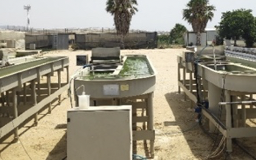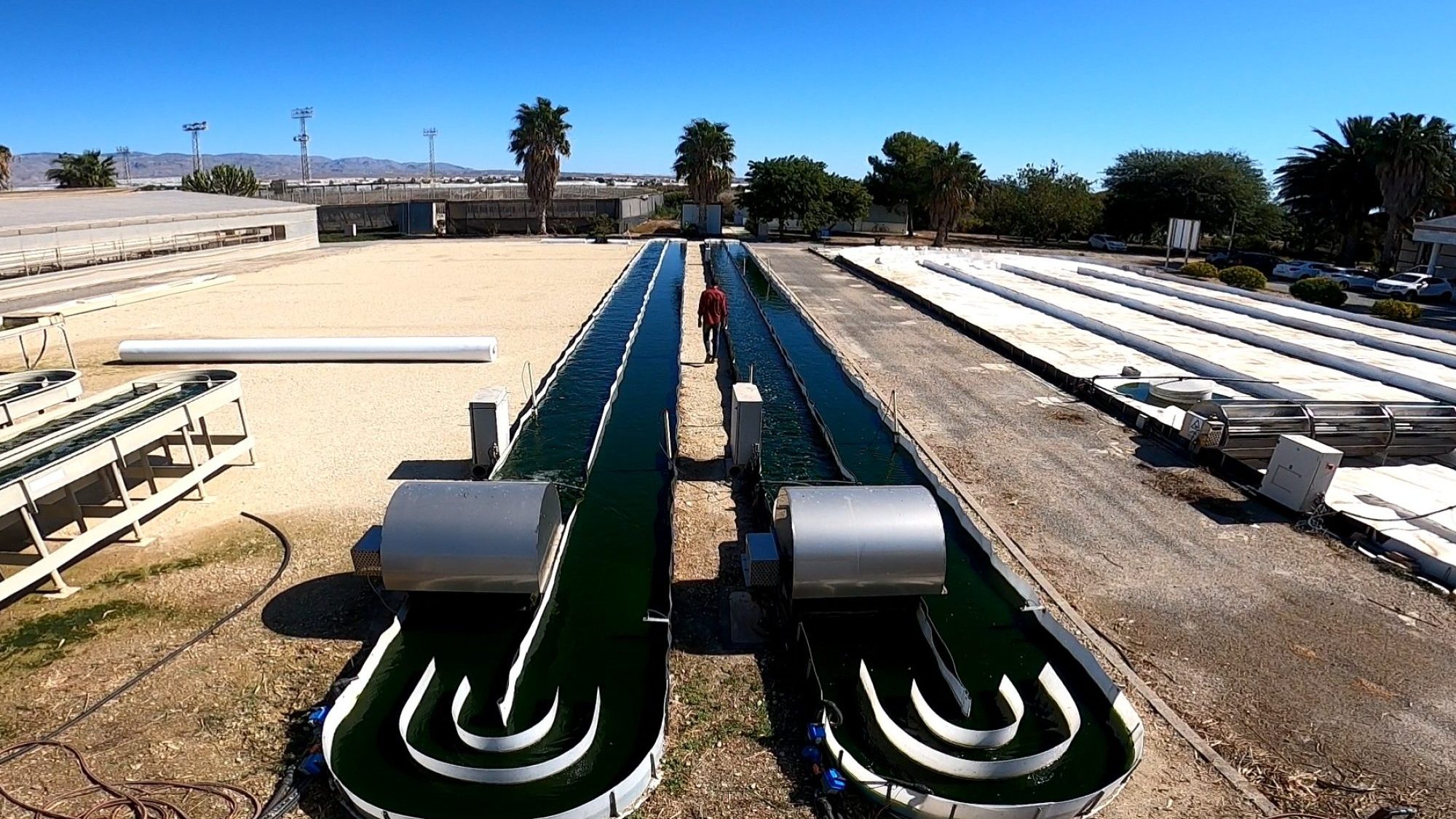For this project, different raceway reactors will be used (from small-scale to large-scale photobioreactors as shown in Figures 9 and 10). Some all them are already available (at least partly), and other needs to be fully implemented. Although the project’s ultimate goal is the development of control technology for industrial-size (large-scale) photobioreactors, working on small-scale plants is compulsory for several reasons since experimentation in large-scale plants is very demanding in terms of material costs and time. In addition, it is a shared facility and thus its utilization is limited depending on the available slots. For these reasons, the project progress is firmly based on first experimenting with small-scale plants, allowing fast feedback for the correct development of the different project tasks.
The small-scale UAL plant consists of several reactors that are partly available at UAL (see Figure 9) and will be also used in the project to extrapolate the results to different reactor sizes and as preliminary results before testing the modeling and control approaches at an industrial scale. Specifically, the plant needs to be completed with different equipment including sensors and actuators. The small-scale UM plant needs to be fully implemented. A small-scale photobioreactor like those shown in Figure 8 will be built in order to perform the experiments as a first step before evaluating the results at the industrial scale at the IFAPA research center. It is worthwhile to mention that the direct availability of this small-scale plant to the group UM will be a key factor for the correct progress of the project with a minimum cost.




The large-scale reactors are located at the IFAPA centre, next to the University of Almería (Almería, Spain), which are reactors built as part of the European project “Sustainable integrated algae biorefinery for the production of bioactive compounds for agriculture and aquaculture (SABANA)” (H2020 – 727874) and previous national projects (DPI2017-84259-C2-1-R, DPI2014-55932-C2-1-R, DPI2011-27818-C02-01). For this project proposal, 5 different photobioreactors will be available. The main two are raceway reactors have a total surface of 80 m2, composed of two 80 m length channels connected by a 1 m wide U-shaped bends. Mixing is performed by a paddlewheel of aluminium blades with a diameter of 1.5 m, driven by an electric motor with gear. The paddlewheel speed is controlled with a frequency inverter at a constant velocity of 0.2 m/s. Carbonation is performed in a sump located 1.8 m downstream of the paddlewheel, which dimensions are 1.0 m depth, 0.65 m length and 1.0 m width. In this sump, CO2 gas or air can be injected through three plate membrane diffusers at the bottom of the sump. The raceway channels are made of low density polyethylene of 3 mm thickness while the curves and sump are made of high density polyethylene of 3 mm thickness. The thin-layer reactor consists of two sloped cultivation plates, each 40 m long and 1.5 m wide, connected by a flat channel that acts as a solar collector. The culture is recirculated through this solar collector by a pump after passing through a bubble column for pH adjustment and oxygen desorption. The total surface area of the solar collector reactor is 120 m2 with a water depth of 0.02 m; thus the total culture volume in this section is 2.4 m. The sump from which the culture is recirculated has a culture volume of 0.7m3 whereas the bubble column has a volume of 0.3 m3, making the total culture volume 3.4 m. The tubular reactors are fence-type photobioreactors made of a 350 m-long tube of 0.09 m diameter, with a bubble column 3.5 m high and 0.4 m in diameter for degassing and heat exchange. Liquid and gas flow rates entering each photobioreactor are measured using digital flowmeters. The culture is circulated through the photobioreactors using a centrifugal pump at 0.9 m/s.
In all reactors, there are pH, dissolved oxygen, and temperature probes. The measurements of the climatic conditions are obtained from a meteorological station, while the temperature of the soil and the depth of the culture (in the case of the open reactors) are measured with sensors incorporated in the raceway reactor itself. Other small-scale reactors are available at UAL and will be also used in the project to extrapolate the results to different reactor sizes and as preliminary results before testing the modelling and control approaches at industrial scale.